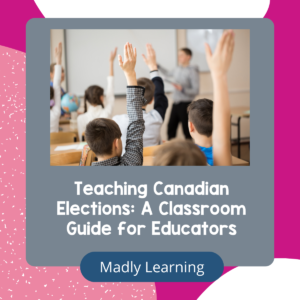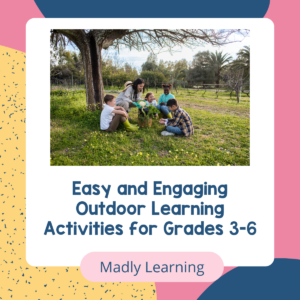As we think ahead to back to school we begin to plan out the rules, routines that are essential to set us all up for success.
But what routines are essential to teach at the beginning of the year that will set you up for success if you plan to use inquiry in your classroom.
1. Calls To Action

Throughout our day we need to get the attention of our class. These types of routines are signals. Some of the signals I need to establish include:
- Signal for attention
- Transition signal
- Gathering space
- End of day signal
2. Signal for Attention

These are words, sounds, or phrases that signal to my class with little input from me on what to do next.
For years I have used the call and response routine of CLASS-YES. When I need the attention of my whole class and I need them to stop, look, and listen I use this call out. When I say CLASS CLASS my student s respond with YES YES. Now however I say class class is how they respond yes yes so to keep it interesting I say it in a variety of ways….like underwater.
There are so many phrases that can be used. So use what works for you and your personality. What matters is that you are consistent that when you call out students stop, look and listen quietly. This routine is practiced very often in my first weeks of school.
Honestly, it is a routine that is constantly reviewed.
3. Transition Signal

Sometimes this one is overlooked and the previous call and response is used for both. What I have found is that having separate signals for these events is important.
Think of the main transitions that you may have in a day. If you have daily tasks that require a series of steps to complete using a separate transition signal will help with this often chaotic time.
- Get to work quickly
- Join me on the carpet
- Move between centers
- Line up at the door
- Hometime
All of these transitions happen daily in my classroom so to have a plan on how we transition and what I expect makes these times more structured.
4. Gathering Space
To get my students to get to work quickly I will often use a key phrase that is recognizable to my students. We discuss this signal and practice this over and over. This phrase is never the same year to year.
- Minds on? Go on
- And go…
- 5…4…3…2…1…go!
Whatever you use it really doesn’t matter. Just practice and consistency. To get my students to gather I love setting a timer for their work period. At the end of the timer, I love to play an alarm that is usually meant to help people wake up. A sound that starts softly and builds is a great way to ease people into this transition.
When the sound is done all students should be on the carpet or gathering space. Because we have knowledge building circles frequently having a gathering place routine is essential. Plus it saves me a lot of instructional time not having to explain what I want to be done every single time. Sometimes we are working in centers or different learning tasks. When I want students to move from one to another it is helpful to have another sound for this too. A quick beep signal works great here.
5. End of Day Signal
Finally, home time is another routine that we need to have a routine to make sure we get it all done. Come up with a little saying for your students that reminds them of what to do. Or even try an acronym. What are the tasks they need to do.
- Floor
- Agenda
- Chairs
- Table
Well, that spells out FACT so try to come up with a cute saying. “It’s home time that’s a FACT” when they hear this they know what to do. Another phrase that could work is “Tidy, Tools, Table, Chairs”. They practice it, you review it, you rehearse it, you time it, you do it again. These routines are tedious but so worth your sanity in the end.
6. Teachers Busy Routine

Other routines you can practice involve planning with your students what to do when the teacher is busy. You could use cups to signal that help is needed. You could use a clip system that students sign up for help and you will get to them. Or you could implement an ask 3 before me system with student leaders helping out. I personally use the ask three before me. I want them first to solve their own problems followed by asking me for help.
Many teachers signal to students that they are off-limits with a light or sign. This is a great idea if you have a class that regularly lines up wherever you are. Make sure however that you talk to students about this and explain that you want them to build their own problem-solving skills. Explain to them why you are unavailable and be aware of certain personalities that will struggle with this. Being too black and white or rigid with this rule can be quite problematic.
7. Movement
Movement is chaos! Students need to be still and quiet…. Well, we are all recovering control freaks so let’s work together to let this one go a bit. Movement is okay; But let’s teach them how.
When should you move, why should you move, and how you should move.
These are all important questions to ask students when planning out this routine. I like to start by playing the what-if game. You know the “but what if I have to…? Well, work through these questions. Lay it all out there.
- Think about how students enter the classroom
- Where do they sharpen pencils
- Where do they grab and plug in their tech
- How do they get from one place to another.
All major traffic areas should have 2-3 feet in between them for a walkway. Try to avoid the bottleneck that happens in classroom where you have placed things in inconvenient places. Also, try to avoid placing high traffic areas in the center of your classroom.
In the first month of school, you want to start with a plan; but also assess along the way if your placement of things gets in the way. See what works best for YOUR students in YOUR space! If it’s in the way: move it. If you need a more detailed walk-through and plan to help you plan through your routines grab this freebie here.

Want to hear more from Patti? Check out her blog or find her on Facebook and Instagram!





